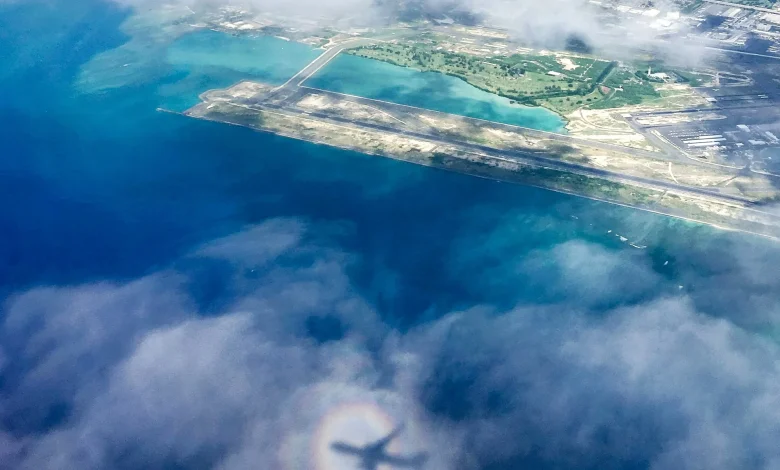New Inflight Portable Charger Ban Reaches Hawaii Route December 15

Starting December 15, Hawaii travelers will be the first among those to lose in-flight use of portable chargers as new international lithium-ion safety rules begin taking effect. Regulators have been signaling for months that personal power banks pose one of the fastest growing fire risks onboard, and the first wave of compliance is now landing on international long haul flights that rely heavily on personal devices, including those to and from Hawaii.
Qantas, which operates nonstop flights from Sydney to Honolulu, becomes the first major carrier serving Hawaii to implement the rules, and its move shows where the industry is heading. Singapore Airlines, Cathay Pacific, Virgin Australia, and Emirates have all added similar restrictions in recent weeks, reflecting a shift driven by international regulators who are tightening lithium-ion safety standards.
US airlines have not announced changes yet, but several carriers say they are reviewing the new guidance and preparing for updated requirements. Regulators set safety expectations, while airlines write passenger policies, and with Qantas already enforcing these rules on a Hawaii route and system-wide, it offers the clearest preview of what US travelers may see next.
What changes on December 15.
Beginning December 15, portable chargers can still be carried onto the aircraft, but they cannot be used in-flight on the affected routes. Travelers will not be able to plug them into their phones or tablets while airborne. Cabin crews will make announcements and remind passengers who attempt to charge devices that in-flight use of personal power banks is no longer allowed.
The rule does not affect an aircraft’s own available seat power. It applies only to personal charging devices that passengers bring. Power banks must also remain with passengers at their seat or in the seat pocket, not stored in overhead bins where fires can burn undetected. The restrictions also prevent passengers from using aircraft seat power to recharge their portable chargers, though seat outlets can still be used to charge phones and laptops directly.
Alternative charging tips and tricks.
Travelers can continue to charge phones, tablets, and laptops using available seat power. However, airline outlets are typically slower than the portable chargers passengers bring from home and often do not charge larger laptops at full speed. The best workaround for most people will be to plug their regular charging brick directly into the aircraft’s 110/220 volt outlet, since only the battery pack itself is restricted.
Those outlets, however, can be worn out on older US aircraft, causing charging bricks to sit loosely or fall out. Some travelers prefer using a charging brick with a short cord rather than a wall-style block because the lighter weight is less likely to pull out of the socket. A few readers have also said that adding a European style plug adapter between the outlet and the charger can improve the connection since those prongs have seen far less wear. This approach will matter more now that portable chargers cannot be used in-flight.
Many planes operating long haul to and from Hawaii still have unreliable power at the seat. For years, portable chargers have filled that gap. Anyone who has flown to the islands knows how often phones and other screens carry travelers through hours of trans-Pacific darkness when sleep does not come easily. Removing those chargers from in-flight use will have a noticeable impact, especially for families and visitors who board with half charged phones after a full day out.
Why some Hawaii flights are among the first.
This shift regarding lithium-ion batteries accelerated dramatically after an Air Busan A320 suffered a catastrophic fire in January when a power bank in an overhead bin entered thermal runaway while the aircraft was still on the ground. The fire spread rapidly through the cabin. When investigators released images, the interior was destroyed from front to back. Seats, bins, sidewalls, and the cockpit bulkhead were burned through before crews gained control. The aircraft was declared a total loss, and that single event changed how regulators view the danger posed by portable chargers.
Virgin Australia experienced a similar incident in July 2025 when smoke from an overheated power bank filled a cabin during a domestic flight, forcing the crew to use containment protocols and reinforcing industry concerns about the growing frequency of these events.
Qantas moved first because of the international rules it must follow, but it will not be the last. US airlines are already assessing how quickly they will need to adapt. Carriers do not want to be caught reacting late to a safety mandate, especially when the hazard involves fire and when foreign regulators have already begun enforcement. Hawaii flights, with their longer duration and reliance on personal devices, are likely to see these changes sooner rather than later.
Why this matters to Hawaii travelers more than most.
Hawaii flying sits at the intersection of long duration, high device use, and limited in-flight alternatives. Many aircraft no longer include seatback screens. Travelers depend on downloaded shows, maps, playlists, and reading. They need to keep phones and tablets powered for hours, since entertainment becomes the fallback when dealing with crowded conditions.
Once portable chargers can no longer be used inflight, passengers become entirely dependent on whatever seat power a particular aircraft provides. That will work well on some flights with better configurations. It will not work consistently on older cabins or on aircraft with shared outlets. Travelers who have relied on topping up during the journey will need to ration battery life, dim screens, or shut down apps far sooner than they normally would.
Hawaii travelers, including us, are already more focused on batteries. At some point, airlines may begin more strictly enforcing the ban on lithium-ion batteries in checked bags. It’s a question we’re frequently asked about, but not consistently. We’ve already taken to packing things like toothbrushes in carry-on bags.
For now, we’re preparing by bringing multiple USB cables of varying lengths for whichever outlets are available, and we expect portable chargers to become tools used in the airport, lounge, and gate areas rather than during the flight. These habits have become routine for us over the years, but it seems all but certain that they are about to change.
The global timing behind this.
The timing of these moves is not accidental. ICAO, the international agency that sets global aviation standards, is reviewing new lithium battery guidelines that could be finalized in 2026. When ICAO issues recommendations, US carriers typically follow quickly, especially in areas involving onboard fire risk. That is why industry observers say the Qantas decision is not an outlier but a preview of what is coming. The process is already in motion, and these Hawaii routes fall close to the front of the apparent path.
US airlines may adopt similar restrictions.
The industry is watching to see if regulators push for additional steps, such as more precise labeling requirements, watt-hour disclosure, or limits on the number of portable chargers that can be brought onboard. Some changes may show up quietly in crew manuals before any public announcements are made. Others may appear in updated terms of carriage, much like e-cigarette rules did in earlier years.
For now, December 15 represents the first turn in a direction that appears broader than one airline and more significant than a procedural update. Hawaii travelers have come to rely on portable chargers as the modern in-flight essential. Losing them, even temporarily or only on certain routes, will change the rhythm of flying to and from the islands.
Do you think this safety restriction is overdue given the rising number of battery incidents, or is it an overreaction that will make flights harder without solving the real problem?
Get Breaking Hawaii Travel News





